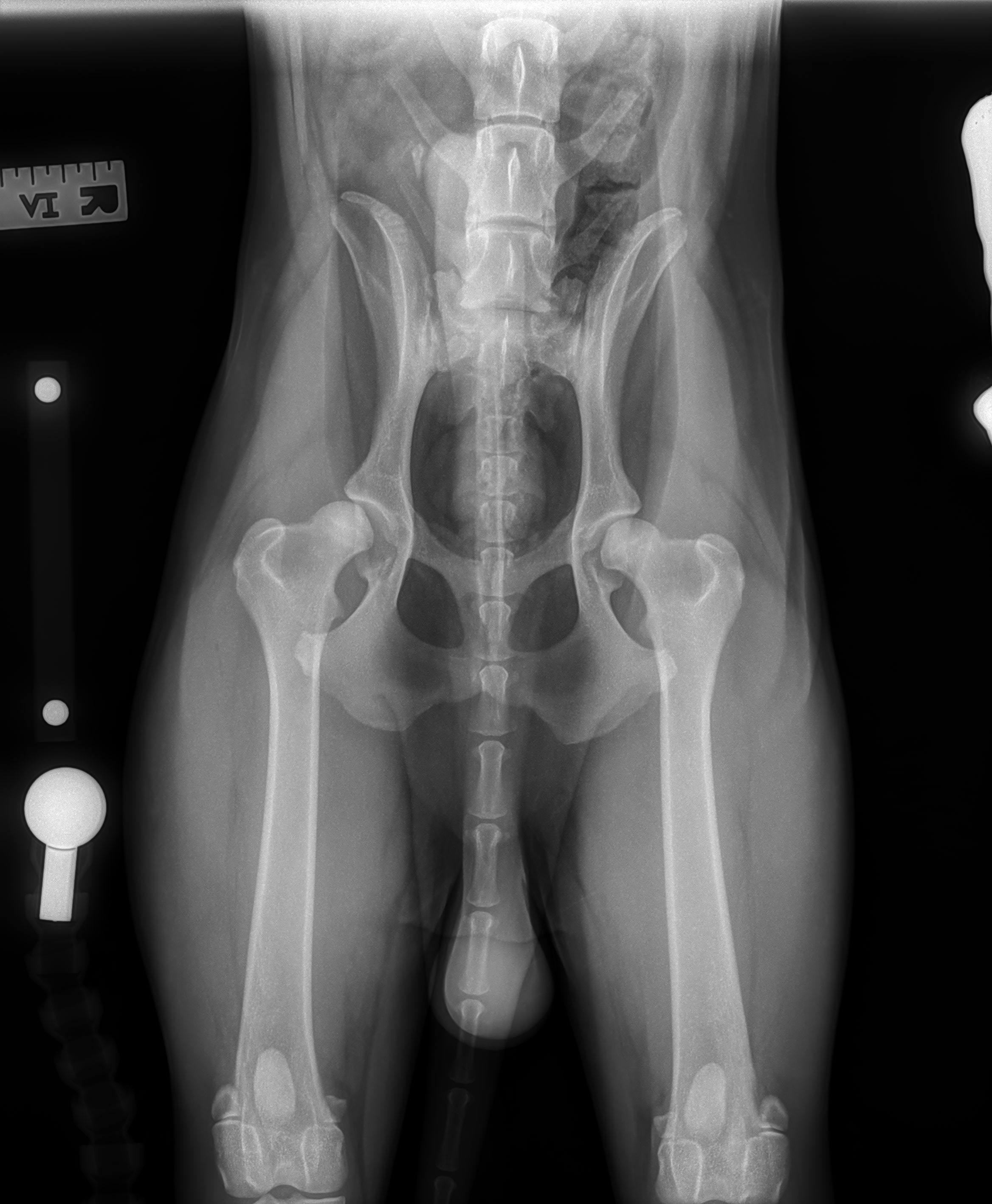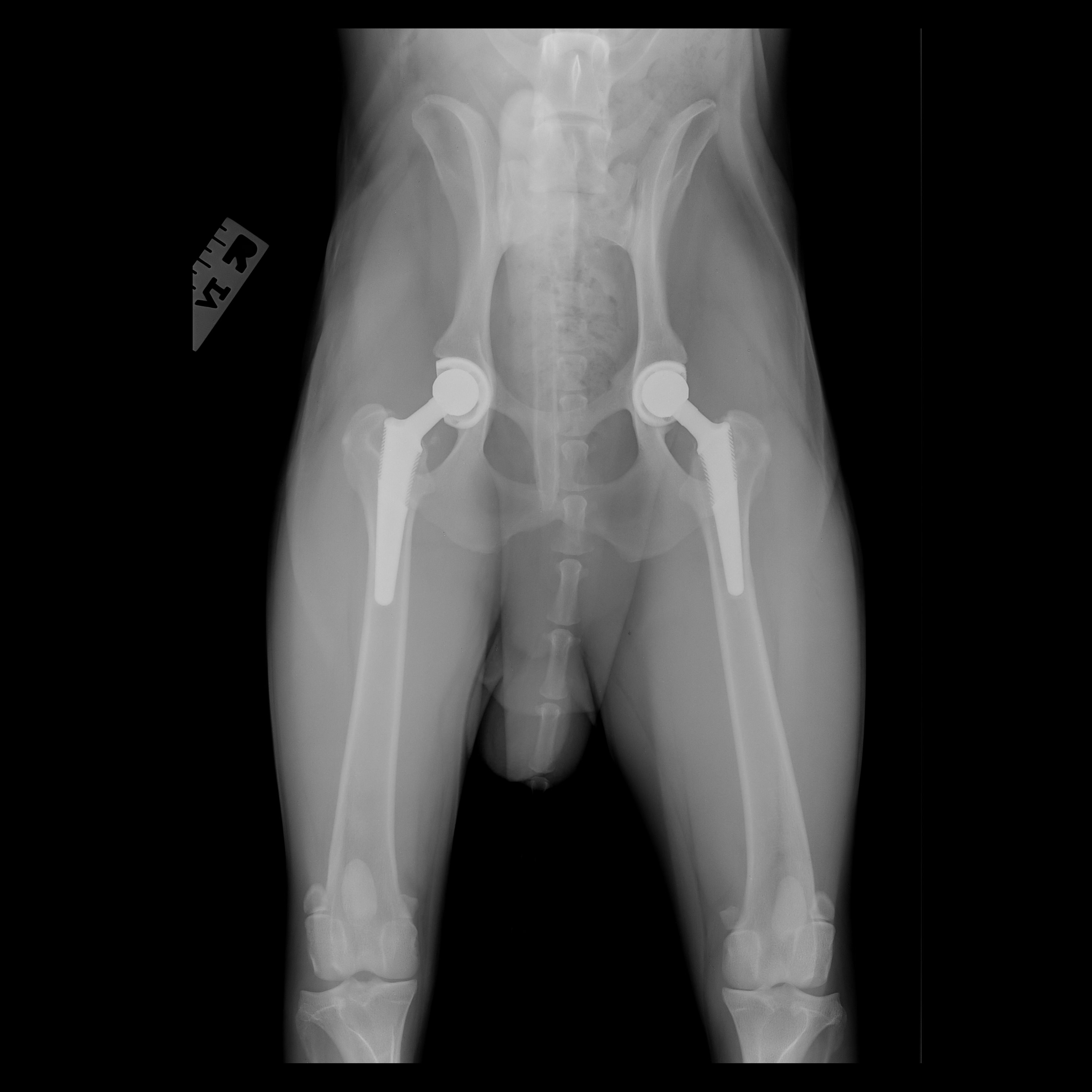Arlo is 2.5-year-old male neutered Barbet from Canada who presented to Dr. Meghan Sullivan of the PVESC Surgery Department. He was diagnosed at 10 months of age with severe hip dysplasia. His owners noted that he would not jump onto anything and that his hips clicked when he walked. Arlo made the trip to PVESC at 12 months old and had templating radiographs (four views) performed to measure him for specific implant sizes. On examination, Arlo was walking well but had a stiffened hind end gait. Both hips were painful and had decreased range of motion bilaterally. There was also a loud clunking noise on range of motion of the right hip with significant subluxation.
 Figure 1. VD pelvis showing significant hip dysplasia bilaterally with secondary degenerative changes prior to a year of age
Figure 1. VD pelvis showing significant hip dysplasia bilaterally with secondary degenerative changes prior to a year of age
Under sedation, he had significant Ortolani bilaterally. Radiographs revealed severe subluxation of both hips secondary to hip dysplasia. There was already mild degenerative joint changes as well as flattening of the femoral head, shallow acetabulum and thickening of the femoral neck bilaterally.
Arlo had his left total hip replacement performed at 13 months of age. Surgery went very well and he was weight bearing with sling assistance on the surgical leg later that evening. He had a BFX (biologic fixation system) which is a press fit (non-cemented) total hip replacement. He stayed overnight for 2 nights and was discharged with strict instructions for postop care. Recovery entailed 3 months of no off-leash and no access to furniture. He was allowed to go for short leash walks several times daily with sling assistance or help ‘em up harness. Arlo did great and his owners were perfectly compliant. Arlo had several weeks of NSAID’s, antibiotics, pain medications and several months of sedatives to aide in his activity restrictions.
Arlo had a routine two-month recheck visit, and the radiographs showed a successful left total hip replacement. He was scheduled for his right total hip replacement one month later (three months after his left total hip replacement). The right total hip was successful with excellent anesthesia and an uneventful recovery. He was discharged similarly after two nights of 24/7 care and headed home to Canada to recover. He had another beautiful recovery, and recheck radiographs at two months showed routine healing. He is now a year out from his surgeries and running, playing, doing zoomies, hiking, etc. Arlo is having a blast now, being super active, happy, and living a pain-free life.

Figure 2. Recheck radiographs 2 months post final surgery: showing successful stages bilateral total hip replacement with BFX system
Total hip replacement is an option that delivers better functionality than the FHO (femoral head osteotomy). This procedure can be performed as early as 8-9 months of age, and consultation is best as soon as hip dysplasia is recognized to help achieve the best outcome. Dr. Sullivan at PVESC is the only surgeon in Maine performing total hip replacement surgery for dogs. We look forward to helping many more pets. To hear more about how to manage hip dysplasia and learn about all surgical options available to help them live their best lives, contact us today.
Authored by: Meghan Sullivan, DVM, DACVS-SA (Surgery)